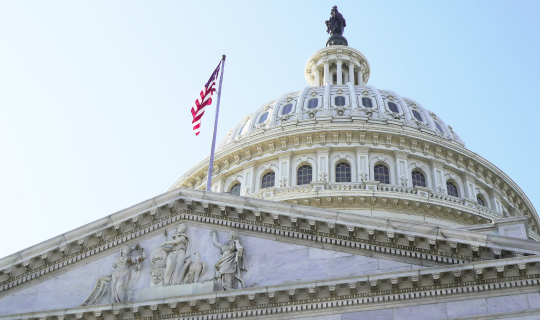DSCSA: Are you ready for November 2024?
By Matt Sample
In less than a year, every entity involved in the pharmaceutical supply chain is expected to be fully compliant with the Drug Supply Chain Security Act (DSCSA). The requirements will be a positive step in helping manufacturers, distributors, and dispensers better integrate technology and data sharing into their daily practices. And it will help consumers have even greater faith in the safety of their medications by making any suspect products easier to trace and investigate. But becoming fully compliant may feel like a complicated process.
The good news for manufacturers, pharmacies, and healthcare stakeholders up and down the supply chain is that you don't need to feel overwhelmed by the DSCSA. This guide will help you better understand what to expect and how to prepare.
What is the DSCSA?
The DSCSA is short for the Drug Supply Chain Security Act (or Title II of the Drug Quality and Security Act.) It will more fully secure the nation's drug supply, making it easier to detect and respond to suspect or illegitimate drugs. The act makes it easier to electronically track certain human prescription drugs, tracing them all the way to their origin.
The DSCSA was created because states used to have many different requirements for pharmaceutical drug tracing. Manufacturers, wholesalers, and pharmacies lobbied the federal government to create one standard that everyone could follow. This became the DSCSA.
Although the FDA enacted the DSCSA in 2013, it has given distributors, dispensers, and manufacturers 10 years to fully implement the federal regulations for unit traceability. That deadline is coming up November 27, 2024.
Who does the DSCSA impact?
The DSCSA impacts all authorized trading partners. This includes manufacturers, dispensers, repackagers, and wholesale distributors.
However, the act doesn't affect every medication on the market that authorized trading partners work with. A number of items aren't required to have the DSCSA's enhanced transaction data. Examples of exempt items include:
- Over-the-counter products
- Imaging products and contrast agents
- Medical devices
- Sterile products such as sodium chloride
Why is the DSCSA important for patients and drug safety?
The DSCSA establishes processes that make it easier to identify and investigate suspect and illegitimate products.
A suspect product refers to something that a pharmacy or other authorized trading partner believes might be illegitimate and needs investigation. For example, consider a prescription bottle that normally has blue pills, but now has pink pills. This makes it suspect. The pharmacy must verify the product identifier with the manufacturer. If the manufacturer determines the product is illegitimate, then a local pharmacy board or the FDA might get involved.
The DSCSA's standards make it much easier to trace products, enhancing prescription drug safety for patients. By providing a thorough product history, authorized trading partners can quickly trace packages to their origin, identify counterfeit products fast, and perform any needed recalls quickly.
While many of these practices have been in place since 2015, they're being enhanced by the November 2024 standards.
What are trading partners responsible for today and how is this changing?
The DSCSA was implemented in two phases: first with lot-level tracking in 2015 and then with manufacturers adding serialization in 2017-2018. The 2024 requirements, which will now make products traceable at the package level, simply build on previous changes.
The 2015 phase: lot-level tracking
The initial 2015 requirements created federal definitions for authorized trading partners (manufacturers, dispensers, repackagers, and distributors), along with policies for dealing with illegitimate or suspect products.
Trading partners were also required to provide their downstream customers with a single document that includes three elements: a transaction statement attesting the business is complying with the law, a transaction history tracing back to the manufacturer, and transaction information with details like the name of the product, strength, dosage, transaction and shipment dates, and previous owners.
Dispensers were required to only accept products from authorized partners with this information. All of this created a system that provided thorough lot-level tracking.
The 2017 phase: serialization
In 2017, the DSCSA created requirements for manufacturers and repackagers to use serial numbers in preparation for package-level tracking. Four elements were required to be affixed on each product as well as in a 2D barcode: an NDC encoded within a global trade identification number, a unique serial number, lot or batch number, and an expiration date.
2023 brings package-level tracking
By November 27, 2024, all authorized trading partners will be required to incorporate these serial numbers into their DSCSA processes. For example, a product's transaction information must include the serial number, expiration, and lot number. Dispensers and manufacturers alike must be ready to alter their processes to accommodate this enhanced unit-level tracking.
How to prepare for November 2024
Hospitals, health systems, retail pharmacies, and dispensing physician practices
Pharmacies at all sites of care will need new policies to accommodate enhanced unit tracking in 2024. Thanks to the DCSCA, the basic processes are already in place. They just need a little fine tuning – and scaling, depending on the site. Consider the following:
- Obtain and begin using Global Location Numbers.
Powered by GS1 Standards, the Global Location Number (GLN) provides businesses the ability to know who is involved in transactions and where products are located throughout the supply chain. By uniquely identifying parties and locations, the GLN helps with tracking products, optimizing processes, and providing greater visibility to shipments moving through the supply chain.
DSCSA requires the use of international standards as defined by GS1, and distributors like AmerisourceBergen cannot send information on the product without the standardized GLN for identification. The EPCIS file for a customer's order (the data file that contains product shipment details for DSCSA-covered items and represents transfer of ownership of materials included in the shipment) cannot be completed without the GLN, and the purchase order will be marked incomplete without a GLN on file. Without the GLN the customer will be out of compliance with the DSCSA federal regulation in 2024 and the distributor will not be able to transact business with the customer.
- Create protocols so you don't accept products without serial numbers.
Pharmacies will need to be ready to refuse products from manufacturers or wholesalers without a serial number. But what can you do to be ready? That's largely up to you or your legal counsel. And while the law doesn't require dispensers to scan barcodes, doing so can be an easy way to make sure you have the required serial number data.
Having documented SOPs that ensure you're only purchasing from authorized trading partners — and checking their licenses frequently — can also help.
- Fine tune processes for investigating suspect and illegitimate products.
Dispensers will need documented SOPs for investigating suspected and illegitimate products that utilize serialization, along with policies for keeping records of those investigations.
In the event of a suspect product, dispensers will have to verify with the manufacturer that the serial number is authentic by using at least three packages or, in cases where there is a lot of the product, 10% of that suspect product.
This isn't a huge change. Dispensers have already had verification processes in place since 2015. Serial numbers will simply aid in the verification, along with any later investigations by the FDA or state board if a product is illegitimate.
- Determine how products will be stored in case a return is necessary.
In November 2024, manufacturers won't be able to accept a return from a customer if they can't match it to a serialized shipping record. This means that pharmacies will need to be more deliberate about how they handle returns. Today, if you buy the same product from two different wholesalers, you might put them on a shelf together. But in the future, you may need to reconsider the best way to manage your inventory so you do not try to return product to the incorrect wholesaler.
- Consider how you will store and access your data.
The requirement for a full transaction history will sunset in 2024. Each product transfer will no longer need a full transaction history accompanying it because this information will already be part of the interoperable tracing system.
This means dispensers might get increased requests for information from auditors and other investigators who can no longer pick a product off the shelf and see its entire transaction history.
Although wholesalers store dispensers' DSCSA data for at least six years, dispensers need to plan in advance how they'll access that data. Will it be via each wholesaler's individual portal? Or will you want your own standalone third-party solution?
When dispensers source their products from more than one wholesaler or manufacturer, they end up needing to use multiple portals to track products. Some pharmacies may want to work with a third-party vendor to create your own solution where you can access all that data in a single portal. Others may begin to see the advantage of a single distribution partner.
Manufacturers
Manufacturers should take several steps to prepare for the November 2024 deadline for the Drug Supply Chain Security Act (DSCSA). Key actions include:
- Assessing current systems and processes to identify any gaps that need to be addressed, including identifying the people, processes, and technology needed.
- Testing and validating new systems and processes, ideally, in advance of the November 2024 date and in partnership with your distributor.
- Putting a risk management plan in place to minimize any potential disruptions to supply chain operations.
How have distributors been preparing for November 2024?
Distributors have been preparing for 2024 by fine tuning returns systems to ensure a smooth transition to DSCSA requirements. They're also evaluating how they store DSCSA data with serialized information.
For example, AmerisourceBergen is establishing systems to verify product identifiers on all its DSCSA products. This will allow us to more efficiently notify any customers in cases of recalls or when drugs are deemed dangerous by the FDA or pharmaceutical companies.
While DSCSA preparation and related changes may feel daunting, there's no reason for pharmacies to be overwhelmed. For the most part, being ready for November 2024 simply requires a close look at processes that are already in place. Luckily, your distributor has ample resources available to help.






